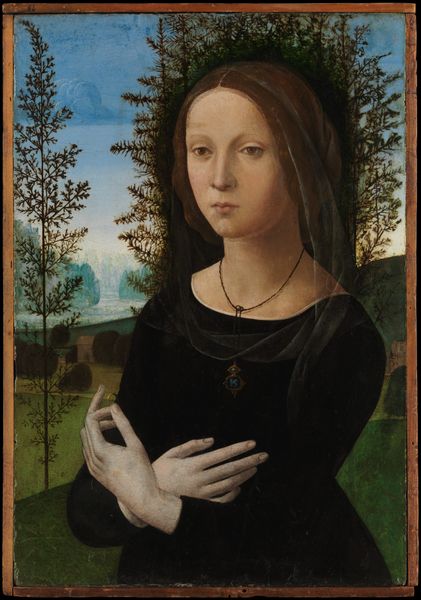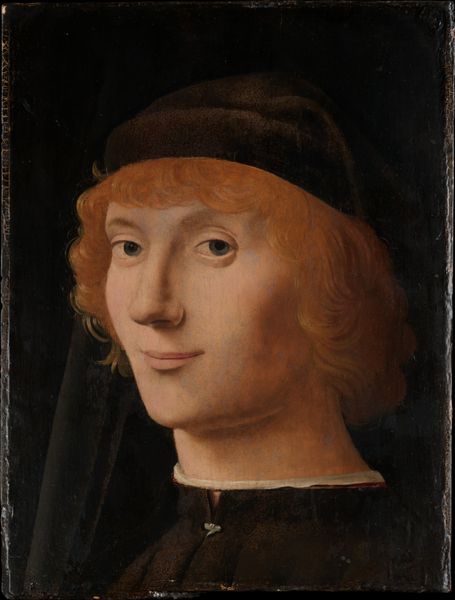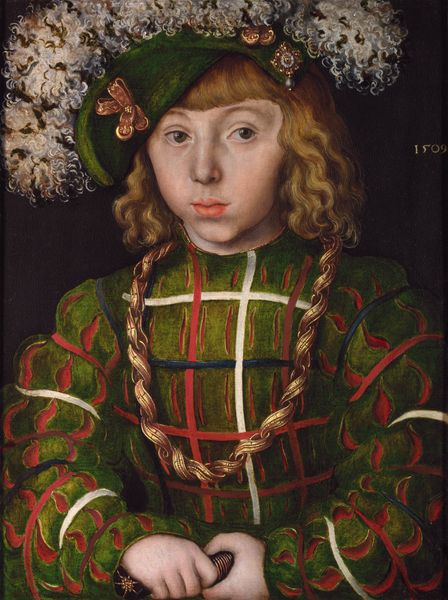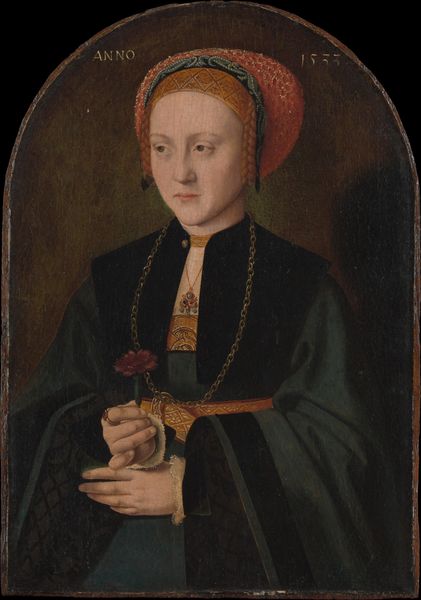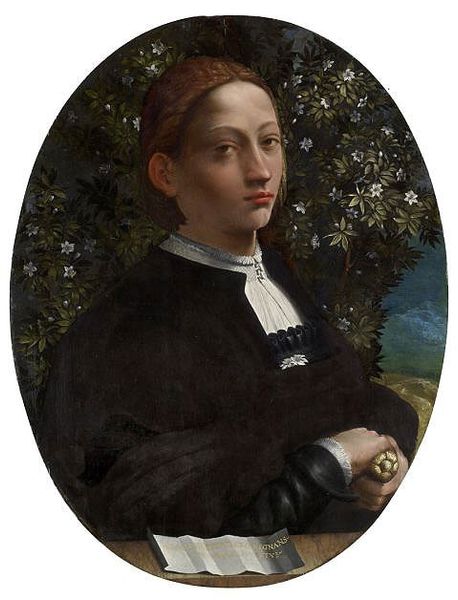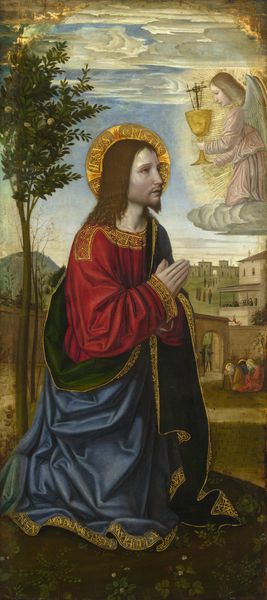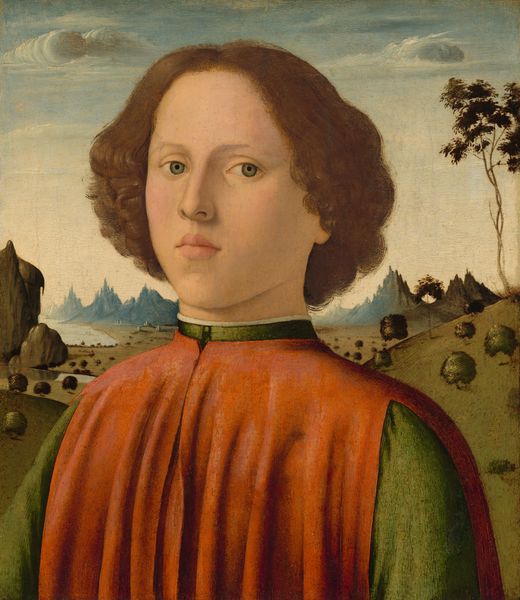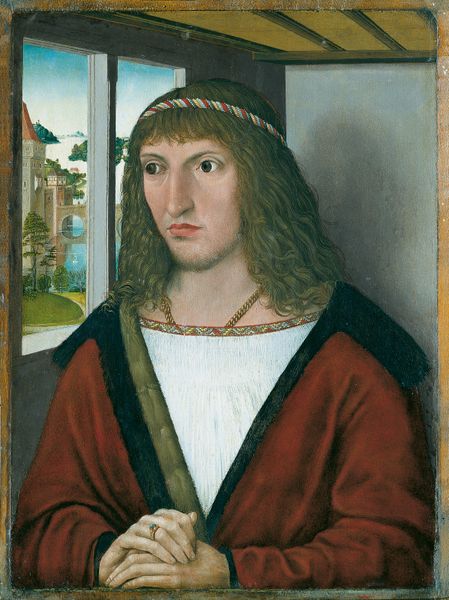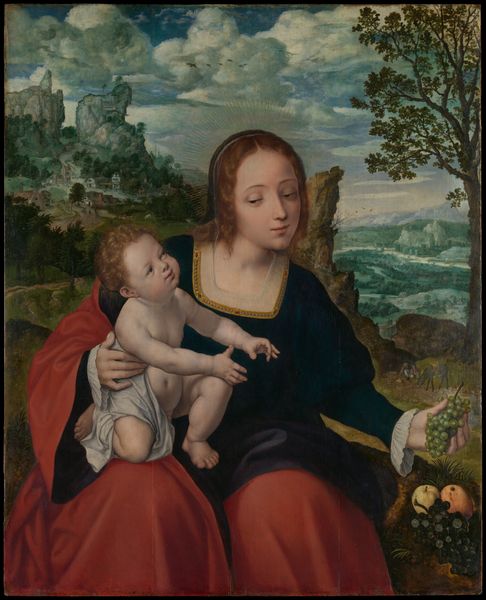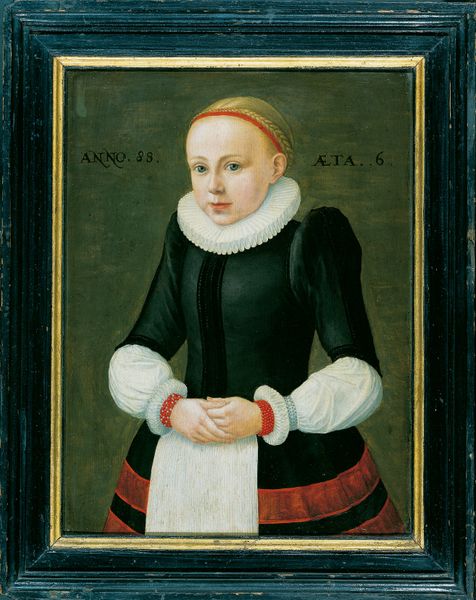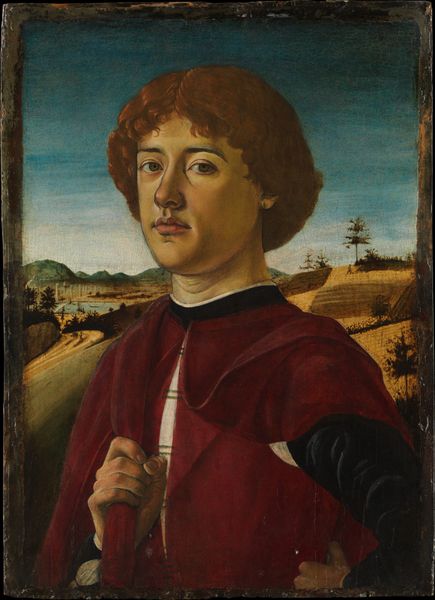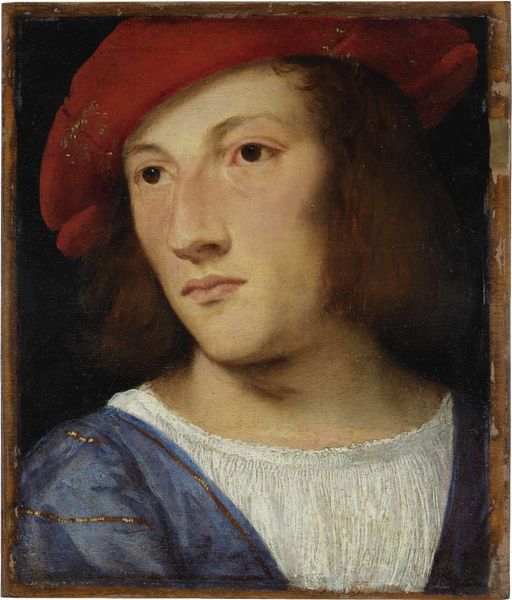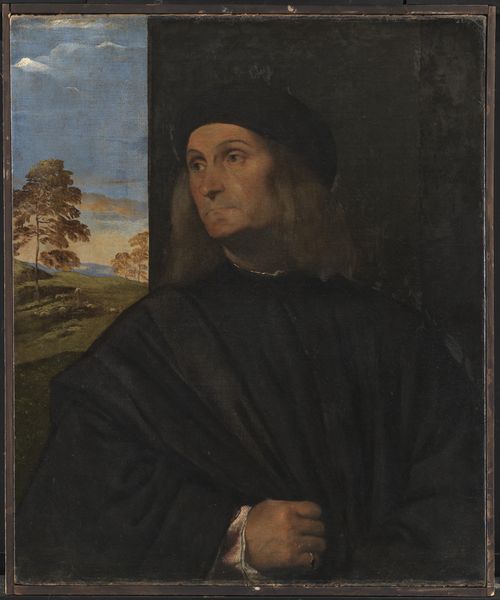
painting, oil-paint
#
portrait
#
painting
#
oil-paint
#
11_renaissance
#
italian-renaissance
Dimensions: Overall 18 7/8 x 14 in. (47.9 x 35.6 cm); painted surface 17 3/4 x 13 1/2 in. (45.1 x 34.3 cm)
Copyright: Public Domain
Curator: Looking at this captivating oil-on-panel portrait attributed to Francesco Francia, painted around 1510, we see Federico Gonzaga as a boy. Editor: There’s a haunting stillness. The child’s gaze, the muted palette… it evokes a strange solemnity. I can't help but wonder what that small token or charm in his hand symbolizes. Curator: Good point, while the painting resides here at the Met, consider where it emerged. During the Italian Renaissance, portraiture was often a political act. Likenesses of rulers and family members reinforced their power and status within their domains, shaping their future reputation. Editor: The Gonzaga family were, of course, a significant power base. Given their patronage of the arts and keen political marriages, this image probably worked in myriad ways. It is more than a boy, but a dynastic pawn and perhaps the small staff he holds points to nascent authority or a right to rule. Curator: It's also striking how Francia rendered the setting. A softened landscape stretches behind Federico, but he's very much enclosed. Consider the socio-political role of the sitter and the way families positioned themselves via commissions to artists during this era, it would hardly be informal. Editor: Enclosure resonates with a symbolic reading of the objects on show here: that rich chain, the severe black clothing. He's ornamented and burdened by the marks of his house. And the soft, rolling landscape serves as a contrast, perhaps to heighten that effect. He stares out beyond the confines of this box while paradoxically pinned to the gallery wall. Curator: A very relevant point when examining this piece in a museum today, versus what was expected in a renaissance era reception hall or chamber, for example. As an art historian, considering these evolving functions of paintings through time and location is pivotal. Editor: Absolutely. Context reshapes and remakes how we relate to those signs. Examining those visual components helps us access earlier patterns of seeing, and feeling, however obscured by history. A young boy framed in oils becomes a marker of the cultural continuity between then and now. Curator: A powerful testament to what this singular portrait achieves, isn’t it? Editor: Indeed, a layered conversation between artifice, individual, and history.
Comments
No comments
Be the first to comment and join the conversation on the ultimate creative platform.
